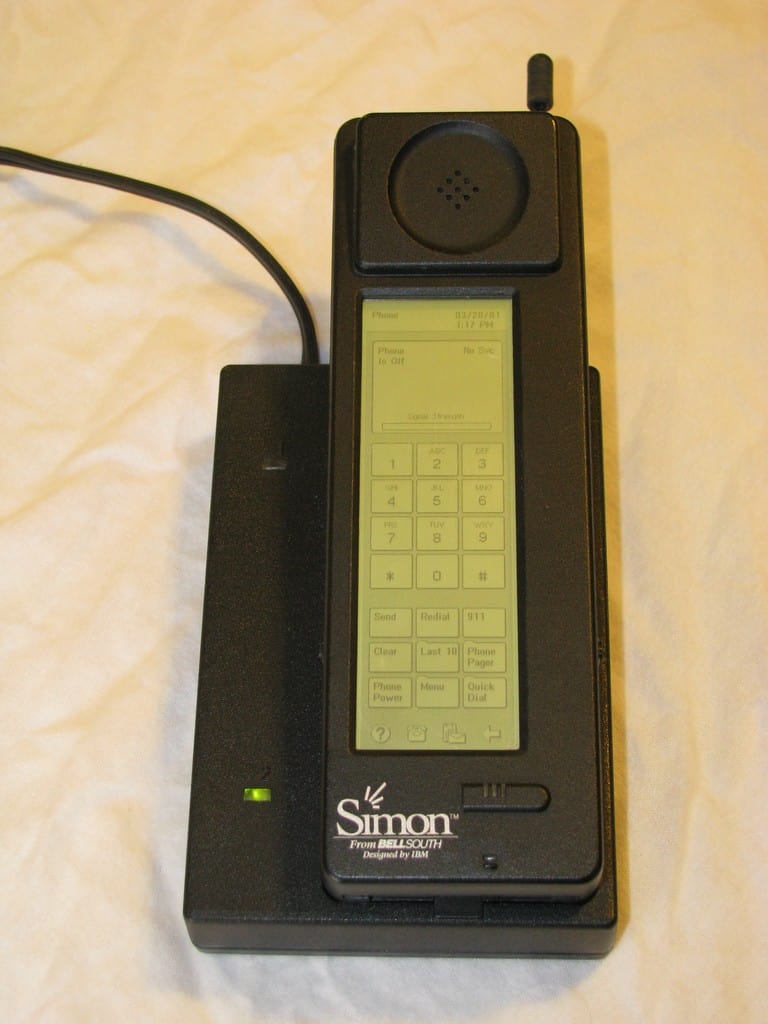4 Facts about Simon Personal Communicator
- Simon Personal Communicator was expensive and big.
- The smartphone had a touchscreen and predictive typing features.
- It was first announced at a trade show in late 1992.
- The smartphone was initially codenamed Angler.
The History of Simon Personal Communicator: What to Know
Touted as the world’s first smartphone, the Simon Personal Communicator was originally announced on November 23, 1992, at the COMDEX trade show in Las Vegas, with the code name, Angler. Although the term “smartphone” didn’t exist during its launch, the device included the capabilities and features of a typical smartphone: handheld, personal digital assistant (PDA), touchscreen cellular phone, etc.
The device also allows users to make and receive telephone calls and integrates well with emails, cellular pages, facsimiles, etc. It also included 11 built-in programs: a to-do list, calendar, calculator, appointment scheduler, electronic sketch pad, world time clock, input screen keyboards, handwritten annotations, address book, and address book.
Quick Facts
- Release Date
- 16/08/1994
- Original price
- $899 with a two-year service contract and $1099 without a two-year service contract.
- Discontinued
- 22/02/1995
- Units Sold
- 50000
The advance in Metal-Oxide-Semiconductor Field-Effect Transistor (MOSFET) technology enabled the proliferation of wireless mobile networks and integrated circuit chips. Frank Canova, an IBM engineer, discovered that the chip-and-wireless technology could be used in handheld devices, which led to a prototype device debuted by IBM named “Sweetspot.”
The Sweetspot prototype combined a personal digital assistant (PDA) and a mobile phone into one device. After the prototype’s debut, USA Today, an American Daily newspaper, featured the photo of Frank holding the prototype on the front page of their Money section.
The prototype was developed into a commercial product codenamed Angler, manufactured by Mitsubishi Electric. Mitsubishi Electric integrated its wireless PDA and cellular radio technologies features into the device. From history, Motorola had earlier rejected IBM’s proposal to manufacture the product, biased that IBM may become a potential rival.
The name, Simon Personal Communicator, was given by BellSouth executives before its debut to the general public in November 1993, a year after its prototype was announced. Debuting at the Wireless World Conference, BellSouth was originally scheduled to go on sale in May 1994. However, the smartphone wasn’t available to consumers until August 1994 due to issues with the device’s software.
Despite the setback in the release date, BellSouth Cellular sold about 50,000 units even though the product was available in the market for public sales for only six months. Simon Personal Communicator was originally sold at $899 and $1099 with and without a two-year service contract, respectively. However, with time, the smartphone’s price was reduced to $599 with a two-year contract. Although the Simon Personal Communicator had no app store, it was preloaded with a few applications, including a Fax, address book, and a notepad. Check out Simon’s User Manual for the device’s full functionality.
The Public Response
Simon Personal Communicator wasn’t long-lived due to its vulnerability. Nonetheless, it was the “real deal” at that time. Built by Mitsubishi Electric and commercially distributed by BellSouth Cellular, the device operated within a 15-state network, with approximately 50,000 units of Simon Personal Communicator sold over six months – between August 1994 and February 1995.
The image featured at the top of this post is ©Bcos47 / Public Domain.

